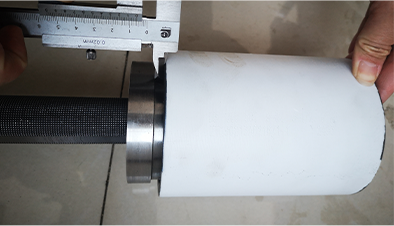- Afrikaans
- Albanian
- Amharic
- Arabic
- Armenian
- Azerbaijani
- Basque
- Belarusian
- Bengali
- Bosnian
- Bulgarian
- Catalan
- Cebuano
- Corsican
- Croatian
- Czech
- Danish
- Dutch
- English
- Esperanto
- Estonian
- Finnish
- French
- Frisian
- Galician
- Georgian
- German
- Greek
- Gujarati
- Haitian Creole
- hausa
- hawaiian
- Hebrew
- Hindi
- Miao
- Hungarian
- Icelandic
- igbo
- Indonesian
- irish
- Italian
- Japanese
- Javanese
- Kannada
- kazakh
- Khmer
- Rwandese
- Korean
- Kurdish
- Kyrgyz
- Lao
- Latin
- Latvian
- Lithuanian
- Luxembourgish
- Macedonian
- Malgashi
- Malay
- Malayalam
- Maltese
- Maori
- Marathi
- Mongolian
- Myanmar
- Nepali
- Norwegian
- Norwegian
- Occitan
- Pashto
- Persian
- Polish
- Portuguese
- Punjabi
- Romanian
- Russian
- Samoan
- Scottish Gaelic
- Serbian
- Sesotho
- Shona
- Sindhi
- Sinhala
- Slovak
- Slovenian
- Somali
- Spanish
- Sundanese
- Swahili
- Swedish
- Tagalog
- Tajik
- Tamil
- Tatar
- Telugu
- Thai
- Turkish
- Turkmen
- Ukrainian
- Urdu
- Uighur
- Uzbek
- Vietnamese
- Welsh
- Bantu
- Yiddish
- Yoruba
- Zulu
6 inch well casing coupling
Understanding 6-Inch Well Casing Couplings Importance and Applications
In the realm of water well construction and maintenance, the components we use play a crucial role in ensuring the integrity and effectiveness of the well. One key element in this structure is the well casing coupling, particularly the 6-inch model. This article will delve into the significance, types, installation procedures, and maintenance practices associated with 6-inch well casing couplings.
What is a Well Casing Coupling?
A well casing coupling is a fitting that connects two sections of well casing, which is the pipe installed in a borehole to maintain a well's integrity. The casing provides structural support, prevents contamination of the groundwater supply, and aids in the safe extraction of water. The coupling facilitates a secure and seamless connection between casing pipes, ensuring that they remain aligned and watertight.
Importance of Casing Couplings
The importance of well casing couplings cannot be overstated. They serve multiple critical functions
1. Structural Support Well casings are subjected to various stresses during installation and operation. Couplings help manage these stresses by providing reinforcement at the joints.
2. Preventing Contamination A well must be sealed properly to protect the groundwater from surface contaminants. Couplings that are strong and well-installed help maintain this barrier.
3. Ease of Installation Using well casing couplings allows for easier handling and installation of casing pipes, especially in challenging environments.
4. Facilitating Repairs and Upgrades If a section of the well casing fails or needs to be upgraded, couplings allow for easy disassembly and replacement without needing to overhaul the entire system.
Types of 6-Inch Well Casing Couplings
There are several types of couplings used in well construction, each with specific applications
. The primary types include1. Threaded Couplings These are designed with threads that allow two casing pipes to be screwed together. This type of coupling offers a snug fit and is ideal for shallow wells where ground movement is minimal.
2. Slip Joint Couplings These couplings allow for some movement and are useful in situations where ground settling might occur. They're slightly more flexible than threaded couplings but may not provide the same level of sealing.
6 inch well casing coupling

3. Welded Couplings In some applications, couplings may be welded to ensure a permanent and robust connection. This type is typically used in deeper wells or high-pressure situations where maximum integrity is necessary.
Installation Procedures
Installing a 6-inch well casing coupling requires careful attention to ensure a proper and lasting fit. Here are general steps to follow
1. Preparation Before installation, ensure the ends of the casing pipes are clean and free from debris.
2. Align the Pipes Carefully align the ends of the two pipes that will be connected by the coupling.
3. Fit the Coupling Slide the coupling over the ends of the pipes.
4. Secure the Connection Depending on the type of coupling, you may need to thread the pipes together, slip-fit them, or weld them.
5. Seal (if necessary) For threaded joints, apply a sealant to ensure water tightness.
6. Check for Alignment After installation, ensure the casing remains vertically aligned to avoid future complications.
Maintenance Practices
Ongoing maintenance of well casing couplings is essential for prolonging the lifespan of the well system and ensuring water quality. Regularly inspect the connections for signs of wear, corrosion, or leaks. If any issues are detected, address them promptly to prevent further damage. Additionally, maintain a record of inspections and repairs to track the condition of the well over time.
Conclusion
In summary, 6-inch well casing couplings are vital components in the construction and maintenance of wells. Understanding their types, functions, and proper installation procedures is crucial for those in the industry. They not only ensure the structural integrity and safety of the water supply but also facilitate ongoing maintenance and upgrades. By investing time in understanding and maintaining these couplings, well owners can ensure a reliable and safe source of groundwater for years to come.
-
Tubing Pup Joints: Essential Components for Oil and Gas OperationsNewsJul.10,2025
-
Pup Joints: Essential Components for Reliable Drilling OperationsNewsJul.10,2025
-
Pipe Couplings: Connecting Your World EfficientlyNewsJul.10,2025
-
Mastering Oilfield Operations with Quality Tubing and CasingNewsJul.10,2025
-
High-Quality Casing Couplings for Every NeedNewsJul.10,2025
-
Boost Your Drilling Efficiency with Premium Crossover Tools & Seating NipplesNewsJul.10,2025







